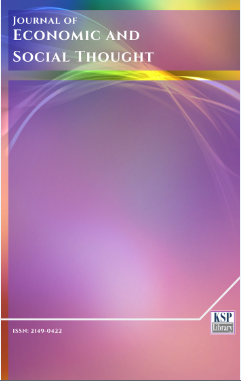The case for a market for livers
Abstract
Abstract. Liver transplantation is a necessary procedure to save the lives of thousands of people suffering from a multitude of diseases. Unfortunately, there are currently 14,301 individuals in the United States in dire need of a liver currently on the wait list, with more people added each year than removed as a result of successful transplantation. This is largely due to the National Organ Transplant Act of 1984’s outlawing the compensation of donors for their organs, which, in concurrence with basic economic theory, has resulted in a vast supply shortage. This paper aims to assess the state of the organ transplantation system in the United States and make the case that compensation for organ donors will not only remedy the vast shortage, but would prove to be a more economical alternative than the status quo.
Keywords. Market for livers, National organ transplant.
JEL. I11, I18.
Keywords
References
Adair, A., & Wigmore, S.J. (2011). Paid organ donation: the case against. The Annals of The Royal College of Surgeons of England, 93(3), 191-192. doi. 10.1308/147870811X565061a
Azzam, A. (2012). History and evolution of liver transplantation. Liver Transplantation - Basic Issues. 15, 1-4. doi. 10.5772/34393
Beard, T.R., Kaserman, D.L., & Osterkamp, R. (2013). The Global Organ Shortage: Economic Causes, Human Consequences, Policy Responses. Stanford University Press.
Bernstein, L. (2017). Who deserves a liver? Officials try to make organ transplants fairer. The Washington Post. Sep. [Retrieved from].
Blumstein, J.F. (1989). Government’s role in organ transplantation policy. Journal of Health Politics, Policy, and Law. 14(1), 27-28.
Butt, Z., et al., (2012). Quality of life, risk assessment, and safety research in liver transplantation: New frontiers in health services and outcomes research. HHS Author Manuscripts. 17(3), 241-247. doi. 10.1097/MOT.0b013e32835365c6
Cuesta-Briand, B., Wray, N.,, & Boudville, N. (2015). The cost of donation: Potential living Kidney Donors’ perspectives. Health & Social Work. 40(4), 307-315. doi. 10.1093/hsw/hlv068
Dickert-Conlin, S., Elder, T., & Teltser, K. (2015). Allocating scarce organs: How a change in supply affects transplant waiting lists. Montana State University.. Working Paper, 1-51. [Retrieved from].
Furukawa, H. et al., (1991). Effect of Cold Ischemia Time on Early Outcome of Human Hepatic Allografts Preserved with UW Solution.” HHS Author Manuscripts. 51(5), 1000-1004. doi. 10.1097/00007890-199105000-00013
Ghahramani, N. (2010). Living organ donation: An ethical evolution or evolution of ethics. International Journal of Organ Transplantation Medicine, 1(2), 57-62.
Gordon, R.D. et al., (1987). Experience with primary liver transplantation across ABO blood groups. HHS Author Manuscripts. 19(6), 4575-4579.
Hainer, R. (2009). Did Steve Jobs’ money buy him a faster liver transplant?, CNN Health. 24 June.
Held, P.J., McCormick, F.,Ojo, A., & Roberts, J.P. (2015). A cost-benefit analysis of government compensation of Kidney donors. American Journal of Transplantation. 16(3), 877-885. doi. 10.1111/ajt.13490
Hoehn, R.S., et al. (2014). Comparing living donor and deceased donor liver transplantation: A matched national analysis from 2007 to 2012. Liver Transplantation. 20(11), 1349-1353. doi. 10.1002/lt.23956
Lladó, L. & Figueras, J. (2004). Techniques of orthotopic liver transplantation. The Official Journal of the International Hepato-Pancreato-Biliary Association, 6(2), 69-75. doi. 10.1080/13651820310020756
Mercer, L. (2013). Improving the rates of organ donation for transplantation. Art & Science. 27(26), 35-40. doi. 10.7748/ns2013.02.27.26.35.e7147
Mixon Jr., F.G., & Upadhyaya, K.P. (2017). Donor compensation and the elimination of the organ shortage in Spain: Evidence from break point analysis. Journal of Statistical and Econometric Methods.. 6(2), 9-15.
Munshower, E.J. (2000). The minimization of lost income in procurement and allocation markets for human transplant organs. PhD. Purdue University.
Ornstein, C. (2017). Some U.S. hospitals don’t put Americans first for liver transplants. ProPublica, [Retrieved from].
Reddy, M.S., Varghese, J., Venkataraman, J., & Rela, M. (2013). Matching donor to recipient in liver transplantation: Relevance in clinical practice. World Journal of Hepatology, 5(11), 604-608. doi. 10.4254/wjh.v5.i11.603
Roggenkemp, S.D. et al., (2007). Exploring the relationship of hospital and market characteristics and organ donation in U.S. hospitals. Journal of Healthcare Management. 52(6), 369-372.
Satel, S., & Vinard, A.D. (2017). The kindest (tax) cut: A federal tax credit for organ donations.Tax Notes. 1623-1632. [Retrieved from].
Shaw, R.M., & Bell, L.J.M. (2014). ‘Because you can’t live on love’: living kidney donors’ perspectives on compensation and payment for organ donation. Health Expectations. 18(6), 3201-3212. doi. 10.1111/hex.12310
Sheehy, E. et al., (2003). Estimating the number of potential organ donors in the United States. The New England Journal of Medicine. 349, 667-674. doi. 10.1056/NEJMsa021271
Starzl, T.E. et al., (1982). Evolution of liver transplantation. HHS Author Manuscripts, 2(5), 614-636.
Steiner, R.W. (2016). The risks of living Kidney donation. The New England Journal of Medicine. 374, 479-480. doi. 10.1056/NEJMe1513891
Sullivan, W. (1983). Buying of Kidneys of poor attacked. The New York Times.
Thorne, E. (2006). The economics of organ transplantation. Department of Economics, Brooklyn College of the City University of New York, 1344.
Weimer, D.L. (2007). Public and private regulation of organ transplantation: Liver allocation and the final rule. Journal of Health Politics, Policy and Law. 32(1), 18-49. doi. 10.1215/03616878-2006-027DOI: http://dx.doi.org/10.1453/jest.v5i4.1803
Refbacks
- There are currently no refbacks.
Journal of Economic and Social Thought - J. Econ. Soc. Thoug. - JEST - www.kspjournals.org
ISSN: 2149-0422
Editor: [email protected] Secretarial: [email protected] Istanbul - Turkey.
Copyright © KSP Library




